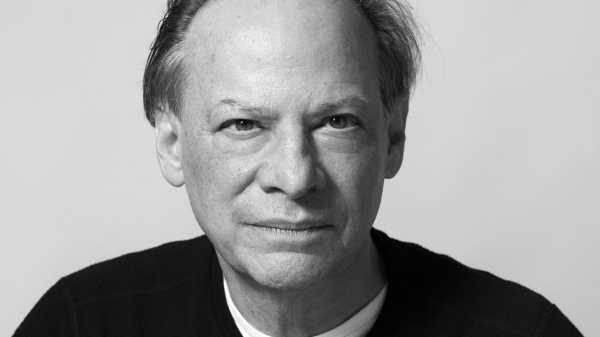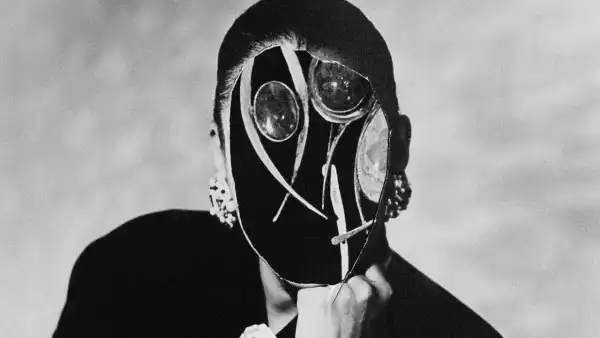
Save this storySave this storySave this storySave this story
Writers who contemplate going onstage tend to fall into two camps: those who know better and those who should but don’t. Of the second kind, The New Yorker has, over its hundred years, produced quite a few. Robert Benchley, one of the magazine’s founding voices (if on permanent loan from the Algonquin circle), was perhaps more famous in his day as a performer than as a writer. His sketch “The Treasurer’s Report” became a classic. He was eventually hired to narrate the musical-comedy film “Road to Utopia”—no small compliment, or challenge, given that it meant adding laughs to a prime Bob Hope–Bing Crosby comedy. Alexander Woollcott, another early contributor who left his title, if not his campy imprint, on Shouts & Murmurs, went on to play himself in George S. Kaufman and Moss Hart’s “The Man Who Came to Dinner.” The character, Sheridan Whiteside, was based on Woollcott and intended to mock him—until he took the part himself, turning satire into homage by his living presence as a pre-mocked subject, like jeans sold pre-distressed. More recently, Calvin Trillin performed two funny and affecting solo shows drawn from his own work—“Words, No Music” and “About Alice.” Lawrence Wright has done a couple, too, including the more sombre “The Human Scale.” And, of course, there’s been a steady trickle of gifted performers who’ve leapt into our pages, and then leapt back out again, as slightly reformed characters, or at least more literary-minded comedians.
To come to the point—and it’s not a point that will survive an interminable buildup—I joined the company of these writers long ago, and am now returning to it. As it happens, I spent a good chunk of my childhood onstage, where I was, for a time, the Shirley Temple of the Philadelphia avant-garde theatre—a boast few could make, or would want to. At nine, I was cast as Galileo’s apprentice in a mid-sixties production of Bertolt Brecht’s “Galileo,” one of the first shows directed by a newly minted impresario, André Gregory—already as sleek as a borzoi, with the same mesmerizing patter that would later delight the world in “My Dinner with André.”
André would later claim that I reblocked scenes whenever he went out to lunch. An affectionate exaggeration—but it’s true that I didn’t quite see why all authority should rest with the director, and I freely offered my notes to the cast, to the delight, I’m sure, of my elder colleagues. One of them was Ron Leibman, who went on to fame as the original Roy Cohn in Tony Kushner’s “Angels in America.” He played the grownup version of my role, and we shared a dressing room—along with his dog. (There’s a fine, doubtless apocryphal, story—all theatre stories, even the true ones, are apocryphal—about Leibman and that dog. When an airline refused to let him bring the animal on board, he reappeared half an hour later in dark glasses and insisted that his German shepherd was his Seeing Eye dog. “But he isn’t a German shepherd,” the agent said. Ron replied, “He’s not?”)
I went on to play many roles in Gregory’s Theatre of the Living Arts—one in a formidable work of post-Grotowskian Theatre of Cruelty called “Beclch,” the cruelty in this case aimed squarely at the audience. I played a “native” boy of indeterminate origin—my body covered nightly in a horrifically skin-tightening blue paint—who was murdered early in the play and left to fester on Styrofoam boulders, symbolically, for the remaining two hours. (I survived by playing Beatles records, over and over, in my head.)
Before long, I took a television turn, appearing in a Big Brothers of America public-service ad as a lost boy. “Mom and the girls try to help, but sometimes a fella just has to talk to a man,” my line went—burned into my mind to this day. “Won’t you be a big brother to someone like me?” I said plaintively, to camera. “Please?” That I had a wonderful father who drove me back and forth from the shoot—not to mention a fine mom and many sisters who never really “tried to help”—didn’t alter the poignancy of the performance. At least, people who saw it tell me they often had to go lie down with the lights off afterward.
And so, as an adult, I leapt from stage to page—rather like John Wilkes Booth, at least with respect to the permanent laming of the leaper. I did make a brief return a few years ago, with a one-man show at the Public Theatre. This was pure literary standup, drawn from a decade or so of telling stories for the Moth. Its one theatrical flourish was a cold opening: I enlisted an unsuspecting audience member to help lay out a nine-by-eleven rectangle with blue tape—exactly the size, I explained once I’d returned with music and narration, of the first studio apartment my wife and I shared in New York. I did the entire show within that dining-table-size space. (That same room was the setting of my first New Yorker short story, “The Blue Room,” in 1987.) Later, I made a meta-appearance in the film “Tár,” playing, in a kind of Woollcott mode, a character based on me: the genial festival interviewer I sometimes impersonate onstage, this time in a tightly scripted version by Todd Field. People have told me they were surprised it was scripted—but this is actually a tribute to Cate Blanchett, the star of the film, who shared the scene with me and who could, so to speak, put the ball wherever she liked and still make the rally feel improvised.
It was about a year ago that Steve Martin—once upon a distant time, a Profile subject of mine—urged me to try a new kind of one-man show. One touching on the many things that have arrested me over the years and still hold my attention (a peculiar mixture of subjects ranging from the origins of Central Park to Proust’s erotic obsession with rats). “Why don’t you talk about everything that interests you and see if it interests anyone else?” he more or less said. “Who knows?” I went to work, throwing together subjects and seeing what stuck.
Though assembled almost entirely at random, the show—so I’m now told—only seems to have been assembled entirely at random. But what broader truth can I offer about the passage from page to stage, in the spirit of those chewy, sapient reflections that used to fill the Times’ Arts & Leisure pages? Theatre, as every essayist turned performer discovers, depends less on elegance of expression than on character, context, and event. The funniest moments in Neil Simon rarely come from a beautifully turned line; they come from a perfectly timed “huh,” an unexpected entrance from stage left, a lifted eyebrow. When a laugh does arrive from a line, it’s often one that seems utterly baffling when quoted out of context. (“Africa hot,” from “Biloxi Blues,” is still fondly recalled—but, trust me, you had to be there.) Even with Oscar Wilde, it’s often the wrong entrance by the right character at just the wrong moment that steals the show from the charm of his crafted paradoxes. In the end, the job becomes—as all those previous inhabitants of the stage would, I suspect, agree—not to orate eloquently but to make moments. (That famous Benchley sketch is all about ineloquence, as the quick-tongued Benchley pretends to be a stumble-tongued public speaker.) Roaming backward through our written work for stories to tell, we try to relocate the original feelings behind the words—and then express those.
Good actors tell me that they begin with the words—memorized, marked, and blocked—and spend weeks in rehearsal rearming those words with the right emotions, so that what the audience experiences is not the writer’s words but the character’s inner life, intermediated by the actor’s craft. Turning language into feeling is the actor’s craft, which is why they speak so much of “intentions” and “obstacles” rather than of scansion or syllables. The words come first; the feeling follows.
Writers, when we take the stage, have the reverse task. We start with the emotions that shaped our stories—finding them, sometimes even memorizing them in order—and then search for the language that can make them new. The words may shift with each telling, but the emotions have to remain the same. We work from the feeling out toward the words; actors work from the words in toward the feeling. The aim, in both cases, is the same: to make thought and emotion indistinguishable. We just come at it from different directions.
There’s another oddity worth noting. You’d think the stage would offer a far more intimate exchange than the page—after all, the audience is staring right at you, where, on the page, the audience remains invisible. Yet somehow the page permits a different kind of closeness. You’re whispering to a single imagined reader, sometimes even confessing to her. In the theatre, the relationship is more communal. In the mind of the performer, the audience fuses into a single organism, reacting with one breath, one body.
The eerie thing—something that returns to me from my thespian childhood—is that the true reward of the stage isn’t laughter or applause, welcome as those are. It’s stranger than that. It’s meteorological. There is a genuinely shifting atmosphere in a room when you perform, even during the simplest play—a kind of felt rising and falling pressure created by the two fronts, actor and audience, colliding. The air in the room seems to get lighter or heavier as the show goes on; you sense the effect of each moment from the way the envelope around you alters. The audience and the performer together make a kind of indoor weather—making rain, or warmth, or, on bad nights, leaving each other standing helpless in the cold.
This isn’t a writer’s metaphor for how it feels onstage. This really is how it feels. First, you turn the room into a world, and then you try to make the weather in that world. Whether it rains or shines—whether everything stays stubbornly cloudy or suddenly becomes clear—is for the audience to decide. You return to your dressing room, drenched or dry, and swear never to do it again, and then, the next night, you do. ♦
“Adam Gopnik’s New York” will be onstage at Lincoln Center’s Clark Theatre from May 16th to 18th.
Sourse: newyorker.com







